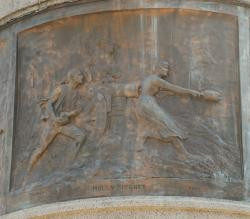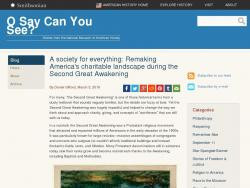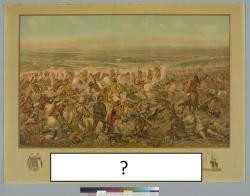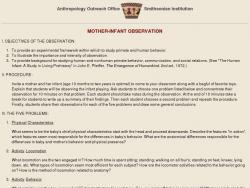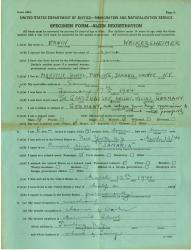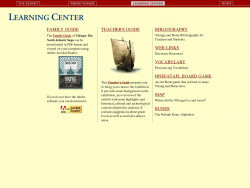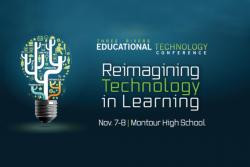Kate Harris
Social Studies teacher
Pittsburgh CAPA
Middle School (13 to 15 years old), High School (16 to 18 years old)
Teacher/Educator
Language Arts And English, Civics, Literature, Cultures, Economics, Social Studies, Geography, Writing, US History, Arts, Other
I'm a history-lover, art fan, and bookworm. I taught high school history (U.S. History and World Religions) for ten years in North Carolina, teach currently in Pittsburgh, PA, and am working to help teachers make the most of this new resource!
Kate Harris's collections
WWI Propaganda
<p><u></u>This student activity includes a variety of types of propaganda related to World War I. The United States government took great action when it came to World War I—they helped organize workers, recruit military members, and regulate the economy so that American could have a successful impact on the war. The Committee of Public Information formed by George Creel and other propaganda-producers used advertising techniques from businesses to make appeals to the average citizen and encourage them to make a difference. This assignment will ask you to connect each piece of propaganda to one of four major goals of the U.S. government during the war and to analyze a few specific pieces for author, audience, purpose, and even the medium/form. </p><p>Essential questions include:</p><ul><li>What are the four main goals of the government during World War I?</li><li>Why and how did propaganda creators target specific audiences with their messages?</li><li>What are the effects of changing the medium or form of propaganda on how it might be received?</li></ul><p>Tags: World War I, WWI, selective service, draft, liberty bonds, propaganda, music, Uncle Sam, persuasive writing, cause effect</p>
 Kate Harris
Kate Harris
14
Wounded Knee, Past and Present
<p>Wounded Knee is often portrayed as the closing point of the wars between Native Americans and the United States government in the late 19th century. However, the place also marks a moment of historic protest. This collection can be used to explore the importance of place in protest movements as well as the history of violence and resistance for indigenous people in the United States. </p><ul><li>How should the site of Wounded Knee be remembered?</li><li>Why did the activists choose to occupy Wounded Knee? What is the significance of that place?</li><li>How were the actions of the American Indian Movement activists similar or different to their ancestors? Consider motives, strategies, and successes, and partnerships.</li></ul><div>tags: Sitting Bull, Oglala, Sioux, Lakota, occupation, massacre, DAPL, Dakota Access, Red Cloud, Kicking Bear, Ghost Dance, cavalry</div>
 Kate Harris
Kate Harris
9
World War II Lesson Plans and Interactives
<p>Collection of lesson plans and interactive websites related to World War II from the Smithsonian Institution.</p>
 Kate Harris
Kate Harris
13
Women and Gender During the Revolutionary War
<p>The Revolutionary War was an interesting time for women, women served in a lot of conventional ways such as cooks, maids, and nurses; however, women also served in a lot of unconventional ways such as spies and even soldiers. Race was also a factor in when accounting for the roles that women played. The following items are a small symbolic representation of the many various contributions that women made during the Revolutionary War.</p>
<p>Some additional source material:</p>
<p><a href="http://www.history.org/History/teaching/enewsletter/volume7/nov08/women_revarmy.cfm">http://www.history.org/History...</a></p>
<p><a href="http://score.rims.k12.ca.us/score_lessons/women_american_revolution/">http://score.rims.k12.ca.us/sc...</a><br></p>
<p><a href="http://www.historycentral.com/Revolt/Americans/Women.html">http://www.historycentral.com/...</a><br></p>
<p><a href="https://allthingsliberty.com/2013/10/10-amazing-women-revolutionary-war/">https://allthingsliberty.com/2...</a><br></p>
<p><a href="https://www.revolutionary-war.net/revolutionary-war-women.html">https://www.revolutionary-war....</a><br></p>
 Kate Harris
Kate Harris
12
Why did the Second Great Awakening inspire reform movements?
<p>The Second Great Awakening was a religious revival movement in the first half of the 19th century. It emphasized emotion and enthusiasm, but also democracy: new religious denominations emerged that restructured churches to allow for more people involved in leadership, an emphasis on man's equality before god, and personal relationships with Christ (meaning less authority on the part of a minister or priest). There was also a belief that the Second Coming was imminent, and society must be improved before that time. Women were heavily involved in the 2nd Great Awakening movement, converting in large movements and taking on leadership roles in service committees and reform work. </p><p>Students and teachers might use this collection as a topical resource to explore:<strong> Why and how did the Second Great Awakening inspired a range of antebellum reform movements?</strong></p><p>Other questions that might support this inquiry include:</p><ul><li>How are concepts of democracy and equality important to both the Second Great Awakening and the rise of reform movements?</li><li>Why do you think women were often leaders in antebellum reform movements?</li><li>More Americans were moving westward during this period. How do you think that impacted the religious revival movement?</li><li>Can you hypothesize a connection between the increase in utopian societies during this time and the growing reform and religious movements?</li></ul><p>Tags: abolition, temperance, women's rights, women's suffrage, second coming, antebellum reform, asylum and prison reform, education, 2GA</p>
 Kate Harris
Kate Harris
35
Who provoked the Korean War?
"On June 25, 1990, the North Korean Army launches it surprise assault on the South." But what led up to this moment? This activity asks students to read primary source documents and interpret historical events surrounding the Korean conflict. Students will look for motives and evidence in a variety of accounts and determine who was responsible for starting the Korean War. <br />
<br />
There are resources with quiz questions that students can answer directly, or teachers may prefer to print documents and resources for in-class use. It is recommended that teachers preview the materials in this teaching collection as there are a variety of ways to structure the lesson.<br />
<br />
Essential questions include:<br />
-How would you describe the relationship between Kim Il Sung and Joseph Stalin?<br />
-Was North Korea, a smaller country, pulling a superpower into a conflict?<br />
-Was the Soviet Union using North Korea to further its goals?<br />
-Why did the United States choose to respond via the United Nations forces instead of unilaterally? How did this decision impact the conflict?<br />
-How does this incident reflect larger themes and issues of the Cold War, especially the role of the United Nations, over-arching foreign policy strategy, and nuclear fears?<br />
<br />
Tags: Wilson Center, Cold War, Korea, China, Truman, Eisenhower, Macarthur, Soviet Union, USSR, Communism
 Kate Harris
Kate Harris
17
What stories do artifacts tell?
<p>This student activity asks students to develop a story about a mystery artifact, editing and adjusting their narrative as they discover more information. Students will develop historical thinking skills while learning more about the experience of living in a specific time and place.</p>
<p>tags: Japan, internment, incarceration, Manzanar, World War II, World War 2, WW2, Executive Order 9066, Roosevelt, FDR</p>
<p><em>#historicalthinking</em></p><p><br /></p>
 Kate Harris
Kate Harris
12
What's in a name?
<p>This collection is based on a lesson in Bruce Lesh's "Why Won't You Just Tell Us the Answer?" and on a Smithsonian National Museum of American History lesson (both cited fully below). In this lesson, students will evaluate primary source material in order to develop an appropriate name for the site of the 1876 battle at Little Bighorn River. This collection allows students to explore the following questions:</p><ul><li>Why do different interpretations of history develop? How do they change over time?</li><li>When thinking about conflicts in history, whose perspectives are valued and remembered?</li></ul><p>tags: Custer, Sitting Bull, Crazy Horse, Little Big Horn, continuity, change over time, perspective, historiography, point of view, Native American, indigenous, American Indian, Sioux, Greasy Grass</p>
 Kate Harris
Kate Harris
18
What Do You Think? Dropping the A-bombs to End World War II (WW2)
This collection asks students to create their own exhibit on a controversial subject: the use of atomic weapons on Hiroshima and Nagasaki to end World War II. Students will create a collection that includes five items reflecting their answers to the following questions:
-How should the bombings of Hiroshima and Nagasaki be remembered?
-Was it necessary to drop the atomic bombs in order to end World War II?
Students should consider both long-term and short-term effects in their responses.
 Kate Harris
Kate Harris
24
Watch Night
<p>This collection asks students to examine an image entitled "Waiting for the Hour" and to try to determine its meaning and purpose. Students will practice interpretation with justification and then learn more about the history of "watch night services" and the importance of the 1862 watch night in United States history. They will also consider the legacy of this image--a copy is currently hanging in the White House. </p><p>tags: emancipation, freedom, Civil War, Abraham Lincoln, proclamation</p>
 Kate Harris
Kate Harris
4
Was Reconstruction a Failure?
The period after the Civil War, known as Reconstruction, had lofty goals for reuniting the nation and preserving the new rights given to African-Americans. For a time, these goals were achieved and three important amendments were made to the Constitution. However, by 1876 Reconstruction was considered over and much of the progress that had been made was undone. This collection of detailed prints and cartoons highlight many different aspects of Reconstruction and asks students to consider the overall result of Reconstruction. Students can analyze each one using the embedded questions.
 Kate Harris
Kate Harris
8
Visions of the Future
This student activity includes a range of visions of the future, to serve as inspiration and present a challenge for students: what do you want your city to be like in the future?
Students will watch a video where students complete a similar project, and then view a variety of artifacts presenting different views of the future, with questions for analysis. Finally, students will be tasked with developing their own vision for their city or town in the future.
 Kate Harris
Kate Harris
15



